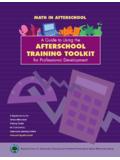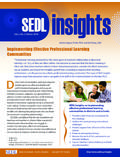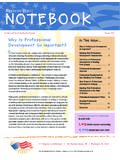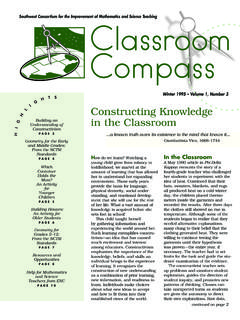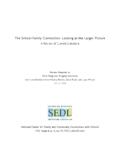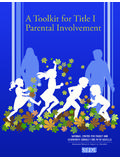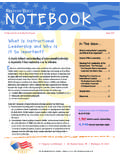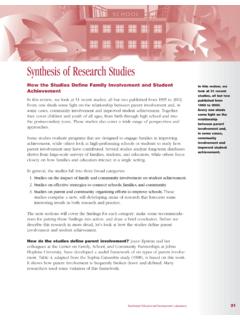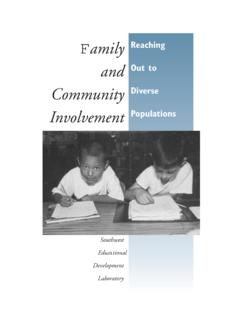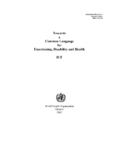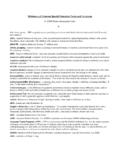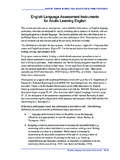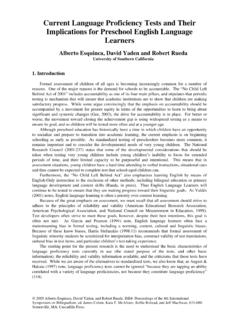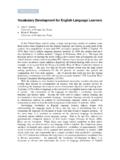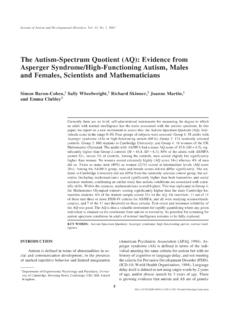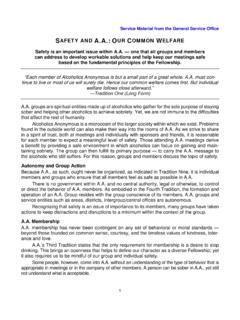Transcription of What Works: Common Practices in High …
1 Produced for the Department of Education by the National Partnership for Quality afterschool LearningCommon Practices in high functioning afterschool ProgramsThe National Partnership for Quality afterschool Learning Final ReportWhat Works?ContributorsAuthorsDenise HuangJamie ChoSima MostafaviHannah Nam Editors Zena RudoCatherine JordanSarah Caverly DesignerShaila AbdullahCopyright 2008 SEDLSEDL 4700 Mueller , TX 78723 Voice: 512-476-6861 Fax: National Center for Research on Evaluation,Standards, and Student Testing (CRESST)Center for the Study of Evaluation (CSE)Graduate School of Education & Information StudiesUniversity of California, Los Angeles300 Charles E. Young Drive NorthGSE&IS Bldg.
2 , Box 951522 Los Angeles, CA 90095-1522(310) publication was produced in whole or in part with funds from the Office of Academic Improvement and Teacher Quality programs , Department of Education under contract number ED-03-CO-0048. The content herein does not necessarily reflect the views of the Department of Education, any other agency of the government, or any other or names of specific software discussed or described in this document are registered trademarks, trademarks, or copyrighted as property of the companies that produce the software. Unless noted otherwise, photos are Jupiterimages note that the World Wide Web is volatile and constantly changing. The URLs provided were accurate as of the date of this publication, but we can make no guarantees of their citation in APA format:Huang, D.
3 , Cho, J., Mostafavi, S., & Nam, H. (2008). What works? Common Practices in high functioning afterschool programs : The National Partnership for Quality afterschool Learning final report. Austin, TX: SEDL. i CONTENTS What Works? Common Practices in high functioning afterschool programs : The National Partnership for Quality afterschool Learning Final Chapter 1: Purpose of the Chapter 2: Study Design Identification of Promising afterschool Preparation Process for Development of the Indicator System and The Indicator System to Guide the Validation Program Program Secondary Final Sample Chapter 3: Methodology and Validation Program Data Collection and Analysis Chapter 4.
4 Internal Program Program Student Program Adequacy of Space and Opportunities for Duration and Frequency of Staff and Staff Staff Experience and Types of Professional Staff Participation in Professional Variations in Professional Development According to Content Summary of Internal Program Chapter 5: Program Parent Sharing Information and Promoting Participation with Parent Parent Perception of the Connecting with the Relationship Building with Expectations for Democracy in the Motivational Support: Engaging the Making Learning Diverse, Current, and ii Providing Opportunities for Social Summary of Program Chapter 6: Goal setting and Curricular Goal-Oriented Standards-based Linkage to Research-based Curriculum and Instructional Summary of Goal Setting and Curricular Chapter 7: Evaluative Structures and Program Program External Internal Perceptions of Program Parent Day-School Summary of Evaluative Structures and Program Chapter 8: Implications and Implications for high Quality afterschool Professional afterschool Continuous Evaluation and Contributions of the National Study Appendix Appendix Appendix Appendix 1 WHAT WORKS?
5 Common Practices IN high functioning afterschool programs : THE NATIONAL PARTNERSHIP FOR QUALITY afterschool LEARNING FINAL REPORT Abstract In an effort to identify and incorporate quality Practices into existing and future afterschool programs , the Department of Education commissioned the National Partnership for Quality afterschool Learning (National Partnership) to study high functioning 21st Century Community Learning Center programs . The purpose of this study was to document Practices to be used to develop resources and professional development that address issues relating to the establishment and sustainability of afterschool programs , to provide models and indicators of promising Practices , and to highlight other descriptive information that local sites can access in planning new afterschool programs or improve existing ones.
6 Fifty-three afterschool programs , representing eight regional divisions of the nation, including rural and urban programs and community-based and school district related programs , were identified using rigorous methods. Promising Practices in content delivery, program organization, and program structure were studied. The findings were synthesized into the National Partnership s afterschool Training Toolkit, which was made available to programs nationwide via the World Wide Web. Based on the study findings, the National Partnership conducted professional development consistently and extensively throughout the nation.
7 2 CHAPTER 1: INTRODUCTION Since the implementation of the No Child Left Behind Act, a greater emphasis has been placed on academic development during the afterschool hours. Research has found that students participation in afterschool programs is beneficial to academic achievement and social adjustment (Lauer et al., 2006; Vandell, Reisner, & Pierce, 2007). A longitudinal study conducted by Mahoney, Lord, and Carryl (2005) found that students who participated in afterschool programs had significantly higher reading achievement and were rated by teachers as having a greater expectancy of success than students who did not participate in afterschool programs .
8 One mechanism in which afterschool programs influence students academic achievement is through the provision of homework assistance. An evaluation of 21st Century Community Learning Center (CCLC) programs conducted by Mathematica Policy Research (Dynarski et al., 2003) noted that homework sessions tend to be the most Common type of academic support both in elementary and middle school programs ; yet the quality of support is generally low. At the same time, studies have found that homework and tutoring programs that rely on untrained or minimally trained volunteers often do little to boost students academic performance (Fashola, 2002). Instead, research on effective approaches to teaching and learning continue to emphasize the need to actively engage students and delve deeply into subject matter, providing opportunities to learn with understanding in combination with a deep foundation of factual knowledge (Bransford et al.)
9 , 2000, p. 16). In addition to the challenges around hiring qualified staff, afterschool programs can also be plagued with attrition and a low frequency of student participation (Dynarski et al., 2003; Grossman et al., 2002). Attrition and low attendance are of particular concern because research has found that those students who participate in afterschool programs the longest (both in terms of frequencies and durations) make the biggest gains (Goldschmidt, Huang, & Chinen, 2007; Vandell, Reisner, & Pierce, 2007) and higher rates of participation in afterschool programs resulted in higher scores on academic standardized tests in mathematics, literacy, and language arts (Huang, Gribbons, Kim, Lee, & Baker, 2000).
10 Similarly, Munoz (2002) found a positive correlation between the number of visits to afterschool programs and improved school attendance and academic achievement. Thus students who infrequently attend the afterschool programs are unlikely to reap academic and social benefits. 3 In an effort to identify and incorporate quality Practices into existing and future afterschool programs , the Department of Education recognized the need for a large-scale project to study high functioning 21st Century Community Learning Center (CCLC) programs that would result in the creation of strategies, tools, and professional development for afterschool programs . In 2003, through a competitive solicitation process, the National Partnership for Quality afterschool Learning (National Partnership), led by SEDL and in partnership with the Mid-continent Research for Education and Learning (McREL), National Center for Research on Evaluation, Standards, and Student Testing (CRESST), Northwest Regional Educational Laboratory (NWREL), SERVE Center at the University of North Carolina at Greensboro, WGBH Educational Foundation, and Institute for Responsive Education (IRE)
